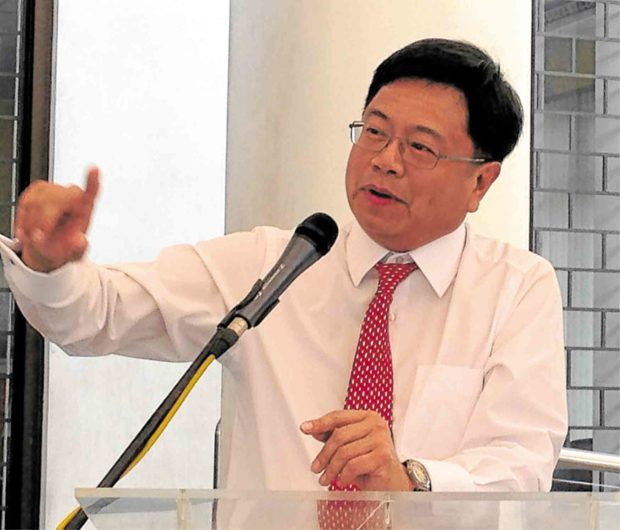
BPI prexy Cezar Consing
While most Philippine banks are bracing for higher credit losses due to the economic challenges created by the COVID-19 pandemic, there’s a big percentage of corporate borrowers who are resilient and do not even want the grace period that their bankers were obliged to offer.
In a recent forum with Harvard Business School alumni, Bank of the Philippine Islands president Cezar Consing said he was amazed that there was a “very large” percentage of borrowers who had told their banks they would continue servicing their debts notwithstanding the enhanced community quarantine (ECQ), waiving the grace period that banks were mandated to follow under the Republic Act No. 11469, or the Bayanihan to Heal As One Act.
“That shows underlying resiliency in our economy that we don’t quite fathom,” said Consing, who is also president of the Bankers Association of the Philippines.
Eugene Acevedo, president of Rizal Commercial Banking Corp., observed a similar trend among corporate borrowers.
“A large percentage paid on time. For those who deferred, many did because their office complement was incomplete and they couldn’t execute normal treasury functions,” Acevedo told the Inquirer.
The president of another big local bank, speaking on condition of anonymity because their estimates were not official, said more than 90 percent of corporate borrowers in his bank did not use the grace period.The Bayanihan law mandated a nationwide moratorium on loan payments. Under the guidelines, covered institutions must implement a 30-day grace period for all loans with principal and/or interest falling due within the ECQ period “without incurring interest on interest, penalties, fees and other charges.” The grace period was automatically lengthened when the ECQ period was extended.
Food and plastic input manufacturer D&L Industries was one of those corporate borrowers that waived the moratorium offer. In return, D&L was able to negotiate for lower rates ahead of the next loan repricing schedule.“We felt this was an opportunity to negotiate for a better rate. We told our banks ‘we will not freeze interest payments [but] in return, try to give us the best rates possible,” D&L president Alvin Lao said in a briefing.
During the early part of the ECQ, which started in mid-March, Lao said everyone was panicking as many businesses were caught off-guard, thus pushing up loan rates.
In the last few weeks, however, he said banks had been slowly reducing loan rates, in line with the monetary easing measures of the central bank.
A number of banks have set aside higher loan loss provisions starting the first quarter.
The banking system has “some capacity for pain,” Consing said. “The question is how much pain will there be?”
Looking at the Asian currency turmoil as the low point, Consing noted that the local banking sector’s bad loan ratio then hit nearly 20 percent of total loans due to a wave of corporate bankruptcies, about a third of which had to be written off. It took about four to five years for the banking system them to clean up their balance sheet.
“But banks then were not as healthy. They were not as capitalized and the whole economy was not as robust as it is now,” Consing said. “So I think even if this is a very very negative shock, the combination of stronger banks, better regulation, more robust economy, more robust monetary and fiscal responses will actually make the resolution shorter and hopefully less painful. That is my base case.” —DORIS DUMLAO-ABADILLA INQ